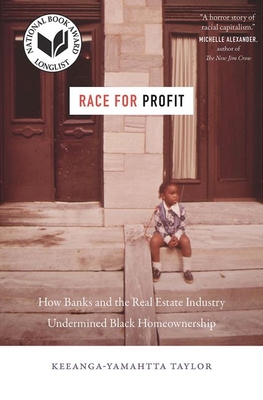Race for Profit: How Banks and the Real Estate Industry Undermined Black Homeownership
Keeanga-Yamahtta Taylor

My partner and I read this as a mini-book club, with informal discussions after finishing each chapter. It was an interesting experience, given my background as a financial regulator and her background in critical race theory and education.
I think I was right in Professor Taylor’s target audience, as someone quite familiar with the history of redlining but not as familiar with the transition of federal housing policy to a public-private collaboration approach in the 1970s (where it remains today). “Enjoyed” is probably not quite the right word, given the nature of the policy shifts covered, but I did learn a lot from this book. Some highlights:
-The FHA turned to the private sector to scale up its mortgage lending activity, but never committed the resources (or had the political will) to adequately monitor and enforce compliance with fair lending laws designed to prevent racist behaviors. Given the government’s continued reliance on the private sector as a force multiplier today (e.g. PPP lending), this is an important precedent to be aware of–and indeed racial disparities in PPP lending have already been raised by several groups.
-George Romney used a lot of rhetoric of integration and antiracism (and indeed, he came across as pretty admirable to me in the early chapters of this book), but ran an organization in the FHA that remained racist in its treatment of its own employees. Ultimately his commitment to integration in the FHA’s activity as well is shown to be weak as well. Today, we’re seeing a lot of organizations publicly espousing antiracist views, but also seeing employees come forward to denounce white supremacist internal behaviors and structures.
-I appreciated Prof. Taylor’s breakdown of “the real estate industry” as a non-monolithic entity. She shows how the interests of homebuilders often conflicted with the interests of mortgage brokers (most clearly, on the relative importance of new construction vs. refurbishing of existing properties). It’s certainly a powerful industry, but effective politicians on either side may be able to exploit internal differences.
-The cult of homeownership takes on a life of its own. Prof. Taylor shows how the FHA programs often pushed Black people into buying houses even when they preferred to rent. The numerical goals of the programs superseded what should have been the ultimate motivation of the programs, which is to provide people with better and more integrated housing situations.
-The 70s see the beginning of suburban municipalities using zoning law to prevent the construction of affordable housing and therefore of integrated neighborhoods. This practice is still alive and well; in my own state, the Connecticut Mirror has provided excellent coverage of it. Withholding federal funds from municipalities is shown to be an effective deterrent, but one that takes a lot of political will to apply.
-Much like with attempts to integrate schools through busing, the most affluent White communities are basically unaffected, and all of the integration efforts are targeted at working class White communities. The result, even if effective, is only partial integration, and more commonly the result is failure. The communities with the most resources to support lower income families are not called upon to do anything, and cynical (probably wealthy) politicians can use integration to stoke racist resentment in the White working class.
Professor Taylor shows how the turn to the private sector in federal housing policy was driven in part by the federal budget pressures caused by spending on the Vietnam War. As I remarked to my partner, one of my takeaways from the book is that racial discrimination and inequalities are so entrenched that it takes a war level of effort (resources, planning, strategy, tactics) to address them. We see the National Guard being called in to enforce racial integration of schools in the South in the early years, but political will dying out later with the project of integration unfinished. Johnson couldn’t summon a war level of effort to integrate housing while fighting a shooting war overseas. Will our nation be able to summon a war level of effort to address racial disparities in the 21st century?